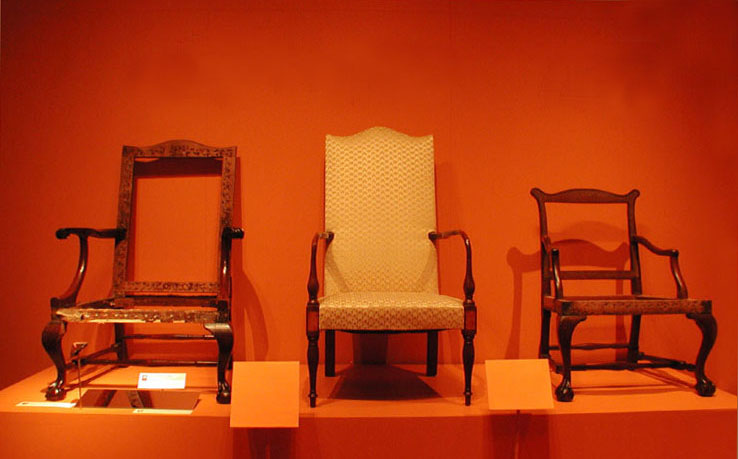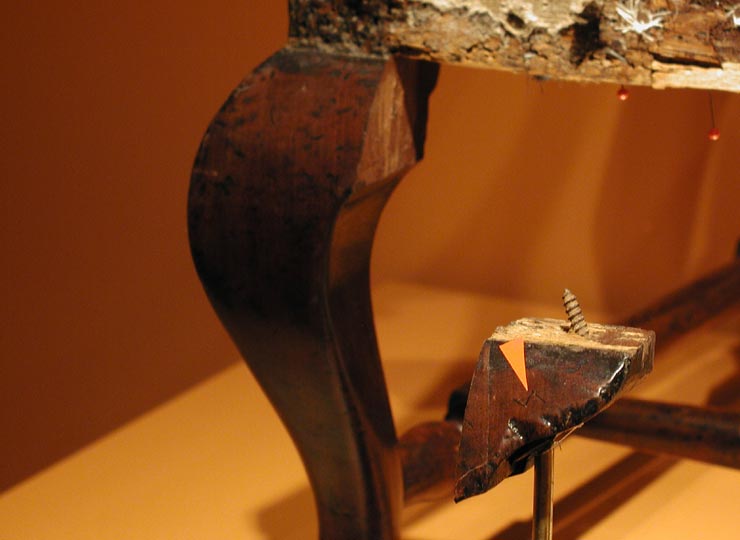
While the maker of the fake chair awkwardly combined designs from two different
regions and time periods, eighteenth century Boston chairmakers typically
followed British precedent in the design and construction of most upholstered
seating forms. With its low back and serpentine crest, this rare American
example—with its upholstery removed for examination—is a Boston
version of a "French chair." The eighteenth-century furniture designer
Thomas Chippendale noted that the carved decoration on French chairs of this
sort "may be lessened without detriment to the design."
| Artificial
and inconsistent color The faker used an unidentified tool with a cluster of different points to distress the arms, legs, and stretchers, and then applied a dark stain. The Mirror under the chair shows where the torn fibers absorbed more of the stain, which resulted in a repetitive pattern of marks that are darker than the surrounding, undamaged surfaces. |
